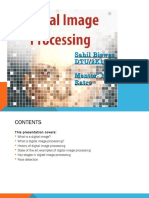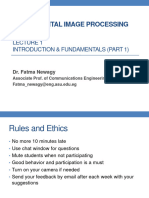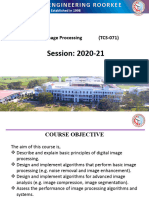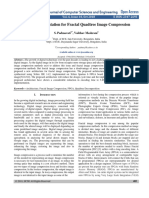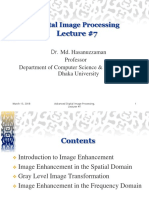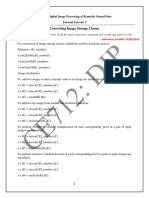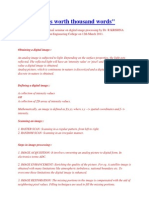0% found this document useful (0 votes)
24 views48 pagesLecture 1
The document outlines a course on Digital Image Processing, covering fundamental concepts, theories, and algorithms used in computer vision, including image acquisition, enhancement, segmentation, and representation. It details key stages in digital image processing such as morphological processing, object recognition, and image compression, along with applications in various fields like medical imaging and automated visual inspection. Course outcomes include understanding core principles and the ability to implement image processing techniques effectively.
Uploaded by
ams2010sams2010sCopyright
© © All Rights Reserved
We take content rights seriously. If you suspect this is your content, claim it here.
Available Formats
Download as PDF, TXT or read online on Scribd
0% found this document useful (0 votes)
24 views48 pagesLecture 1
The document outlines a course on Digital Image Processing, covering fundamental concepts, theories, and algorithms used in computer vision, including image acquisition, enhancement, segmentation, and representation. It details key stages in digital image processing such as morphological processing, object recognition, and image compression, along with applications in various fields like medical imaging and automated visual inspection. Course outcomes include understanding core principles and the ability to implement image processing techniques effectively.
Uploaded by
ams2010sams2010sCopyright
© © All Rights Reserved
We take content rights seriously. If you suspect this is your content, claim it here.
Available Formats
Download as PDF, TXT or read online on Scribd
/ 48

















